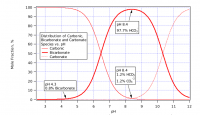Hey there,
The report that my water company gave me does not include HCO3. They do report an alkalinity of 17.
I use brewfather and I'm not sure how much lactic acid to add to achieve a 5.2 pH without knowing the HCO3 levels? I'm thinking it's not estimating my pH correctly without that info. Should I just add HC03 into brewfather until the alkalinity reaches 17? Is there another way I can solve this problem?
Thank you.
The report that my water company gave me does not include HCO3. They do report an alkalinity of 17.
I use brewfather and I'm not sure how much lactic acid to add to achieve a 5.2 pH without knowing the HCO3 levels? I'm thinking it's not estimating my pH correctly without that info. Should I just add HC03 into brewfather until the alkalinity reaches 17? Is there another way I can solve this problem?
Thank you.































![Craft A Brew - Safale BE-256 Yeast - Fermentis - Belgian Ale Dry Yeast - For Belgian & Strong Ales - Ingredients for Home Brewing - Beer Making Supplies - [3 Pack]](https://m.media-amazon.com/images/I/51bcKEwQmWL._SL500_.jpg)





























